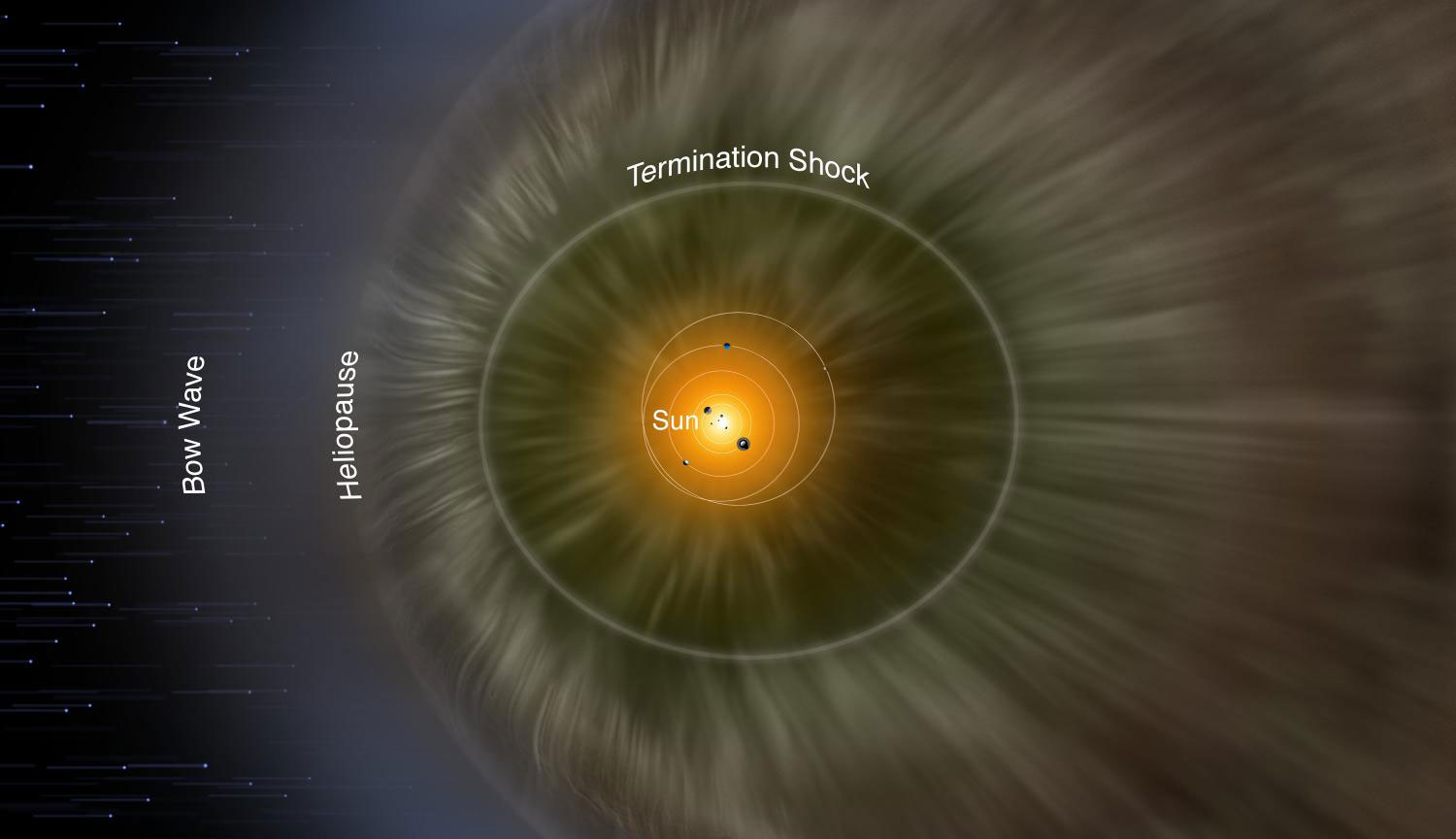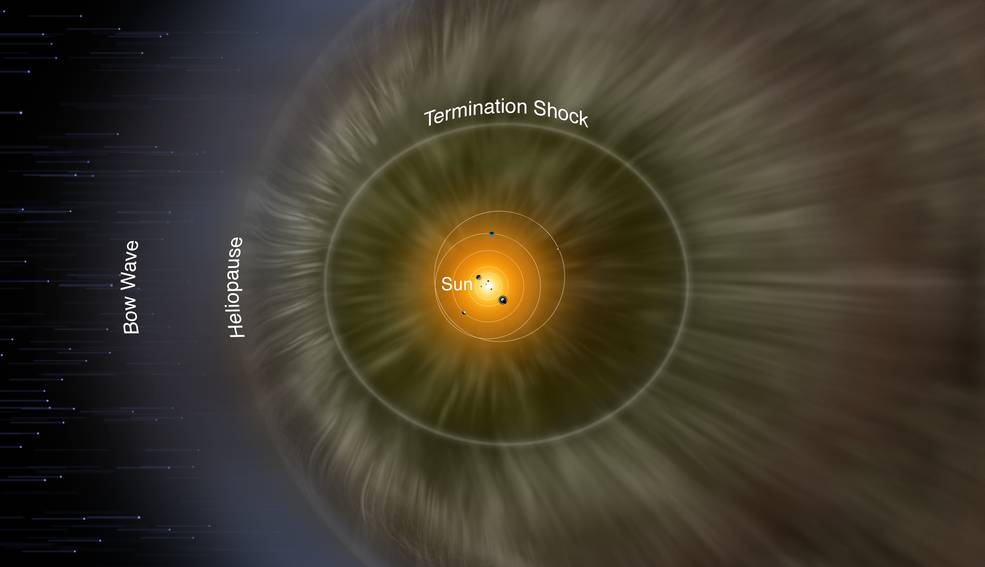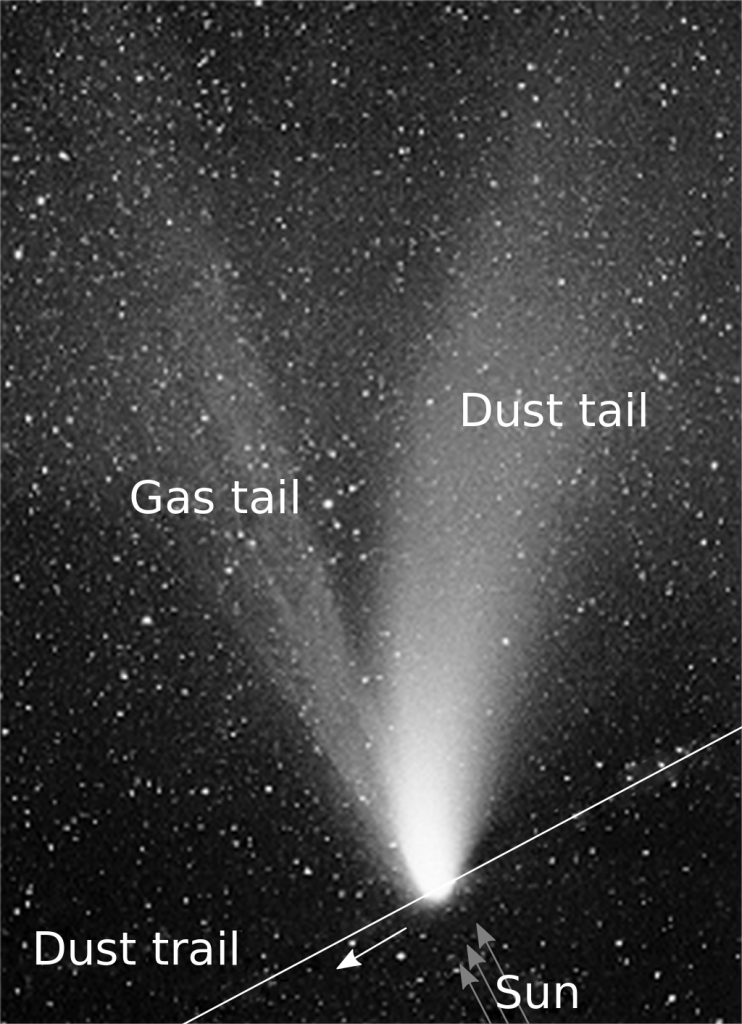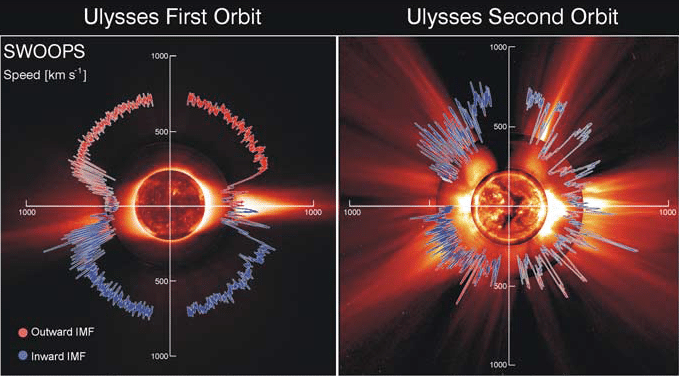
Solar wind
Written by: Tinatin Baratashvili, Robert Niedziela, Seve Nyberg, Sotiris Stamkos
The solar wind is a stream of plasma (hot, ionized gas) coming from the Sun, consisting of protons, electrons, and alpha particles. The variations during Sun’s 11-year activity cycle determine the properties of the solar wind, including its magnetic field, speed, temperature, and density. Moreover, the solar wind varies depending on where on the Sun it originates. At first, solar wind particles move along solar magnetic field lines, so they propagate radially away from the Sun but at a greater distance, the solar rotation bends the magnetic field, creating a structure called a Parker spiral.
Heliosphere
The heliosphere is the region around the Sun in which the pressure of the solar wind is stronger than the pressure of the galactic winds, creating a “bubble” of matter ejected by the Sun in the surrounding interstellar medium.
The heliosphere also acts as a shield to protect the solar system from a large amount of cosmic radiation. The behavior of the solar wind affects the heliosphere, forms its boundaries, and divides it into separate areas, depending on the speed of the wind particles.
- The termination shock is the point where the solar wind speed becomessubsonic (less than that of sound in air). The termination shock is located about 75 to 90 astronomical unit from the Sun, however, phenomena such as coronal mass ejections (CMEs) can push this boundary by a few astronomical units.
- The heliosheath is the region beyond the termination shock, where the solar wind still dominates but moves at subsonic speeds. The solar wind is dense and much more sensitive to interaction with the interstellar medium.
- The heliopause is the boundary of the whole heliosphere, beyond which the pressure of interstellar matter begins to dominate. It is often considered the outer boundary of the Solar System. The distance to the heliopause is not known exactly and most likely depends on the current solar wind speed and the local density of the interstellar medium, but it is far beyond Pluto’s orbit.

Features of the solar wind
The solar wind has two distinct states, the fast and slow solar wind. The slow solar wind mainly originates from the Sun’s equatorial belt and has a typical speed of about 400 km/s. The fast solar wind originates from coronal holes, regions of open magnetic field lines that usually reside near the magnetic poles of the Sun, and has a typical speed of about 800 km/s. The solar wind is very tenuous there are only from a few to a few tens of particles per cubic-centimetre.
A usual visual example of the effects of the solar wind are the plasma tails of comets. Comets can be seen having two tails, an ion gas tail and a dust tail. The dust tail is caused by the comet’s elliptic trajectory around the Sun and the ion gas tail is caused by the solar wind pushing charged particles off of the surface of the comet. This causes the tails to travel into different directions as the solar wind carries the charged particles radially away from the Sun.

around the Sun and the ion gas tail caused by the solar wind pushing charged particles
(ions) off the surface of the comet away from the Sun. (Credit: NASA Ames Research Center/K. Jobse, P. Jenniskens)
Measuring the solar wind
The first spacecrafts to surpass the near-Earth space environment were the Soviet Luna III and Venera I in 1959. Their instruments showed that there is a formation of plasma in the interplanetary medium that is not stationary. Two years later, more detailed in-situ measurements were made by the American spacecraft Explorer 10. The final confirmation was made by the American spacecraft Mariner II which, during its journey to Venus in 1962, made extended measurements of this specific plasma flow.
These measurements showed that the solar wind is ubiquitous and has an average velocity of 500 km/s. These values are very close to those predicted by the theory formulated by Eugene Parker a few years earlier.
In the 55 years that have passed since then, the interplanetary medium has been systematically explored, with missions ranging from near the orbit of Mercury ~0.3 AU (the Helios spacecraft) to the heliopause and beyond (the Voyager and Pioneer missions). Their measurements showed that the features of the plasma flow and the accompanied magnetic field are in agreement with the predictions of most dynamic models and enabled us to study in detail the connection of interplanetary phenomena with solar phenomena.
Most contemporary missions (SOHO, WIND, ACE) sent at the Lagrange point L1 located approximately 1.5 million kilometers from Earth towards the Sun were crucial to get a clearer picture.
Most satellites, that continuously measure the parameters of the solar wind, are at the level of the ecliptic. The whole situation changed in the early 1990s with the launch of the Ulysses spacecraft. It found out that there was a much faster solar wind stream originating from the polar regions of the Sun.

Recently, a beginning of a new era in solar wind observations has been marked the launch two spacecraft. The Parker Solar Probe is a Nasa space Probe launched in 2018 with the mission of making observations of the outer corona of the Sun. The goals of the mission are to trace the flow of energy that heats the corona and accelerates the solar wind and determine the structure and dynamics of the magnetic fields at the source of the solar wind flow.
The Solar Orbiter mission is a Sun-observing satellite that was launched in 2020 and
developed by the European Space Agency. Solar Orbiter is intended to provide detailed
measurements of the inner heliosphere and nascent solar wind, and perform close
observations of the polar regions of the Sun. The goal of the mission is amongst others,
to get a clear insight on how and where do the solar wind plasma and magnetic field
originate in the corona.
Modelling of the solar wind is also very important for predictions and for understanding the related physical processes. Since solar wind is not homogeneous and has a bi-modal structure the simulations help us to understand its configuration better and the results of its interaction with solar eruptions.
